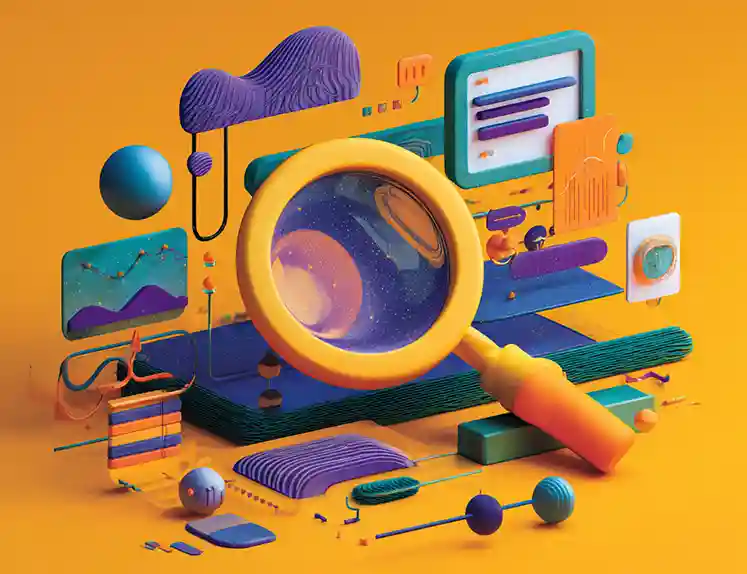Content management continues to be one of the fastest-changing industries in marketing technology. The shift from traditional CMSs to headless CMSs and now digital experience platforms (DXPs) has been complemented by changing approaches to content marketing, consumer behavior, and digital channels.
Want to get your enterprise ready for 2022? Take note of these trends that will be highly relevant:
- Greater Adoption of Headless Technology
- Automation
- Real-Time Engagement
- Virtual and Hybrid Events
- Content Recycling & Reuse
- Team Diversity
- Voice and Visual Search
- Growing Importance of API-First Strategy
- Implementing Previous Trends
Greater Adoption of Headless Technology
Even though headless architecture is already in use by some leading organizations, much of the web, including several enterprise businesses, are still powered by traditional and legacy CMS and e-commerce technologies. However, even in the case of those traditional CMSs like WordPress, the headless approach will grow in popularity as William Chin, Digital Marketing Manager at PickFu explains,
“We’ve seen over 341% growth since I’ve been onboarded, due to the aggressive content marketing strategy we’ve developed. At the core of that marketing strategy is our headless WordPress environment. What I mean by that is we use WordPress’ API to pull into our React / Ruby application so that all of our content lives on our main application, but we still get to utilize a WordPress backend. I think we’ll end up seeing way more companies switch to headless because of how lightweight of a solution it is.”
How to Get Ready:
Headless platforms are on the rise as organizations try to cope with the growing number of channels where their customers want to see content. The flexibility provided by headless architecture trumps what is possible with a traditional CMS or e-commerce platform. However, while platforms like WordPress do offer a headless option, it pales in comparison to a CMS that is built from the ground up using headless technology. Check out some of the leading headless CMS platforms on the market, and choose what’s best for your organization.
Automation
Content teams are frequently tasked with doing several tasks manually that take up an extensive amount of time, such as posting on social media, launching webinars, and even personalization. Also, other tasks like research can be done with the help of bots. Expect more organizations to use automation to manage these tasks and regain their time. Richard Boyd, co-founder & CEO at Tanjo, says,
“For too long, enterprises have been spending time and money on repetitive tasks, looking for information on past projects or experts worth connecting that got lost over the years due to lack of proper data management. In 2022 we see a huge potential for new applications that will help employees focus on higher-value activities because they can finally rely on an army of bots organizing and presenting the right business objects (projects, proposals, clients, articles, or people) at the right time.”
How to Get Ready:
Take stock of the repetitive tasks your content team is tasked with doing and find automation tools to help you instead. For example, tools like Buffer and Hootsuite can automate social media posting. Plus, you can leverage chatbots to locate information that might have taken you hours to find, interact with customers, and more.
Real-Time Engagement
Customers already expect enormous engagement from brands across a number of different channels and touchpoints. With many already leveraging technology to provide omnichannel engagement, now is the time to introduce methods that can help them engage customers in real-time. According to Jason McMahon, Digital Strategist at Bambrick,
“Consumers today expect authenticity from the businesses they follow on social media or subscribe to via email. Answer questions and share user-generated content to give your brand a personality and engage with your fans.”
How to Get Ready:
McMahon has the answer for how brands can prepare for this trend too. “Using Instagram Lives, Facebook Lives, and LinkedIn Lives to stimulate real-time connection.” These live interactions provide an opportunity to answer questions that customers may not have been able to ask previously and create a genuine connection as you would in real life.
Virtual and Hybrid Events
Virtual events are not new for most companies but expect the trend to continue as brands deliver webinars and social media streams to their audiences. Just as work is expected to shift towards a hybrid model that combines both remote workers and those in-office, events are likely to take a similar approach.
How to Get Ready:
Marketers will need to create virtual components to accompany their live events. For example, this could be as simple as a poll delivered to mobile devices or tablets to gauge audience interest in a particular topic and create engagement for the primary speaker. Again, businesses will need to use the right content management system that enables them to deliver such dynamic content on multiple devices.
Content Recycling & Reuse
Content should never be created just once and then never heard from again. Instead, it needs to be repurposed and reused wherever possible. Amit Ranjitkar, Marketing Head at Agentcis, expects brands to find new ways to repurpose their content, particularly for SEO purposes,
“2022 will see old content getting evaluated and edited. Some may be deleted as well if deemed not helpful as per the new content marketing trends. SEO experts will be doing their best to use the old ranking content to bring in more traffic through SERPS by making content more exciting and engaging. A content audit will be a huge SEO trend in 2022 likewise.”
How to Get Ready:
As Amit mentions, starting with a content audit can help you determine which existing pieces of content need to be updated or removed and which ones could benefit from being repurposed for another channel. Breaking down and updating a white paper into a series of long-form blog articles, which can then be broken down into snippets for various social media channels, infographics, and more are just a few ways of content can be repurposed after an audit. However, marketers should also think of the multiple ways that content can be reused from the idea stage.
Team Diversity
Content management has several layers, especially when you consider the number of different types of content that need to be produced. As part of any content team, you need copywriters, videographers, graphic designers, and more all working together to get the most out of content and ensure that it’s fit for every channel where you want to publish. In 2022, expect companies to make their content teams more diverse so that they can effectively cover the multitude of different roles, rather than just expect 1 or 2 marketers to be able to do everything.
How to Get Ready:
Focus on your team’s core strengths and then find others to complement them. If you can’t hire a full-time employee to cover a particular role, then consider using freelancers to help fill the gaps where needed. Having a diverse team ensures that you have the necessary resources to create engaging content experiences for your audience. After coming up with a content plan for 2022, you can assess whether or not you can execute it.
Voice and Visual Search
Conducting a search using text used to be the only way to do it, but voice search has continued to grow in popularity. This trend is likely to continue and be joined by visual search methods, forcing marketers to adapt their content to keep up with changing consumer habits. Liubou Zubarevich, Senior SEO Specialist at ScienceSoft, explains,
“Now, when Google’s search engine allows users to find relevant information via voice and visual search, it’s time for marketers to optimize web content accordingly. To make content voice-search ready, they need to create content with words that their target audience is likely to use in voice-searching for their products or services. To make content ready for visual search, marketers should provide multiple high-resolution images for each product or service and optimize image titles and descriptions based on keyword research. It’s also important to adjust image size and file types to avoid website slowdowns.”
Optimizing content for these voice and visual trends will be essential for brands hoping to win against their competitors and gain an advantage in search rankings. It’s also important to understand why this trend will likely be prominent in 2022 so that strategies can continually be adjusted to meet the requirements. As Zeeshan Akhtar, Head of Marketing at Mailmodo, points out,
“The popularity of voice assistants like Alexa has shown that people are adopting voice searches seamlessly in their lives. This will mean that content managers will have to update all the content and create new ones to cater to this trend.”
How to Get Ready:
Again, this trend will require content teams to assess the existing content they already have. Ideally, the best-performing content and pillar posts that are already generating the most traffic and engaging customers will be the best starting point for updating.
Growing Importance of API-First Strategy
Digital companies may not have been aware of just how much they use and rely on APIs in their day-to-day activities, but many are now finding out. As a result, many organizations are doubling down on an API-first approach to building software and digital experiences or choosing the software that helps to complement such an approach.
How to Get Ready:
Understand that APIs will continue to be highly used across organizations as a way to connect disparate best-of-breed systems. Facilitating this API-first approach means that you need to have an API-first CMS or headless CMS at your disposal. As Russ Danner, VP of Products at CrafterCMS points out,
“API-first CMS platforms provide a central hub for digital experience management by leveraging headless architecture. As a result, a variety of digital experience applications can use APIs to pull the content they need to deliver engaging experiences to the right audience at the right time on the right channel.”
Implementing Previous Trends
The pandemic changed focus for many businesses, shifting how most businesses operated and accelerating digital transformation. Organizations have essentially settled into their primary remote roles, but some of the trends which began in 2020 have been kept as they were when they first started. In 2022, organizations will likely double-down on what worked, remove what didn’t, and find ways to better implement and improve upon trends they had already tried introducing. Focus areas such as adopting headless technology, developing the marketer, developer, and overall employee experience will become even more critical as businesses seek to improve the well-being of their remote and hybrid workforce.
How to Get Ready:
Businesses need to take a look at the trends they first uncovered in 2020, such as implementing headless to deliver content to various channels. As customers grow more accustomed to e-commerce and viewing content on their tablets and smartphones, companies will need to improve the types of digital experiences they deliver to them if they want.
Focusing on the marketer and developer experience is also important as these departments need to be equipped with the right tools if they are going to succeed. Again, headless architecture built around a hybrid headless CMS, or what Crafter calls headless “plus” CMS, can provide the answer. This provides developer freedom and flexibility by enabling them to choose the frameworks and technologies they prefer for each use case. It also supports marketers by providing them with drag and drop and WYSIWYG editing capabilities that they were accustomed to with traditional CMS platforms. The main difference is that the headless CMS is built for the modern digital experience.
Finally, enriching the employee experience even more by introducing custom-built intranets and portals can be a difference-maker, particularly in a remote environment where companies need to foster togetherness and collaboration digitally.

 Mike Vertal
Mike Vertal




